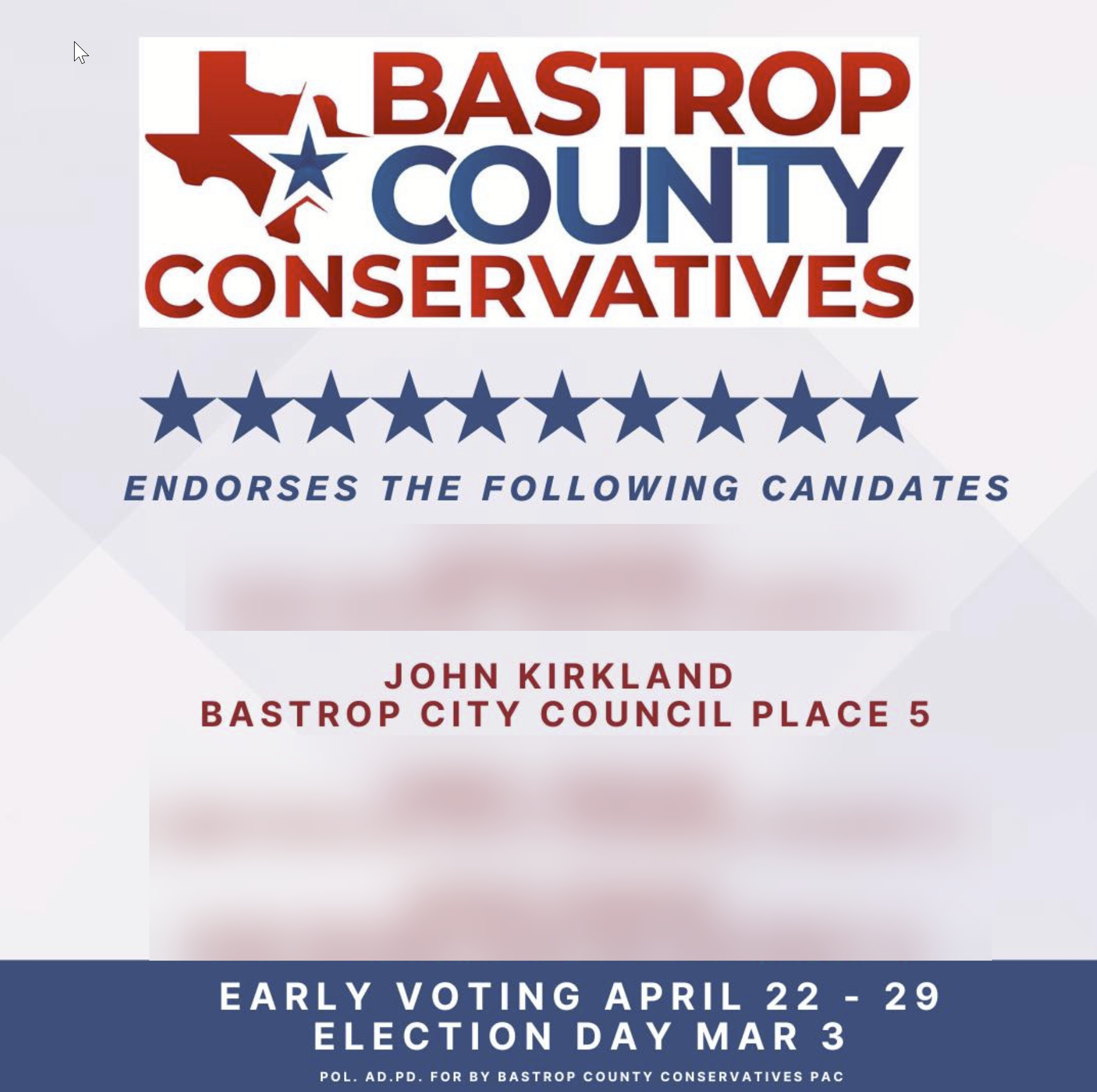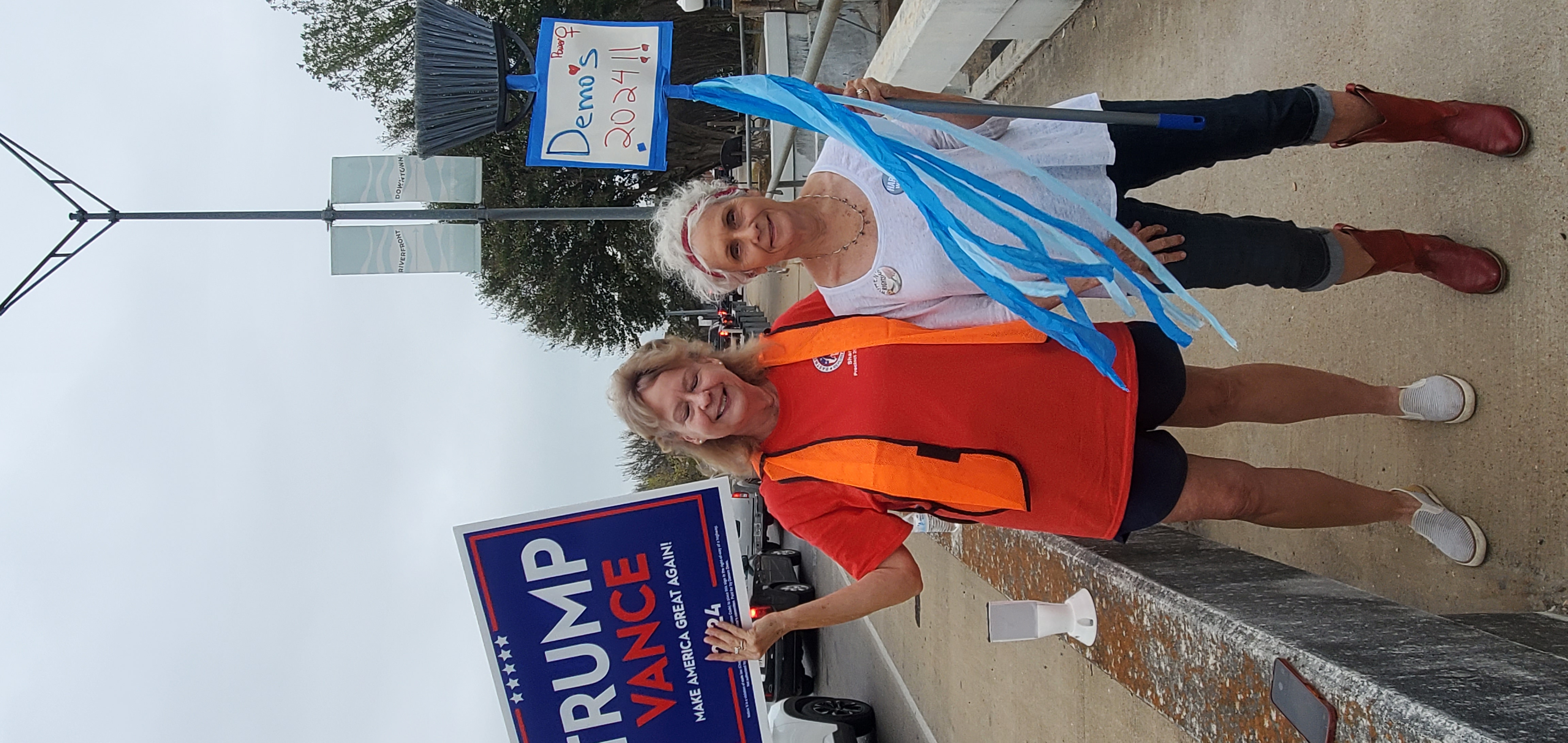I’m shocked at the sloppiness in how the City of Bastrop conducts business. And, sloppy government = closed government. Is the sloppiness just incompetence or is it purposefully being used to confuse the public and deter their participation?
I started watching the City of Bastrop Council machinations when three of them (a voting majority) started down the path of demanding the mayor’s resignation, accusing him of all manner of wrong-doing.
Though more than 20 years ago, I remember very vividly when my political opponents manipulated people, angry about a state-mandated housing development, to demand my resignation. In my case, it made good press, but they couldn’t even muster the signatures on a petition. And, the woman who so vociferously pontificated at that meeting ended up the one in trouble. She was a Board of Education member and failed to note that she was not representing them when she spoke. She was formally reprimanded.
So this attack on Lyle really piqued my interest. For the most part, I know the players and who is connected with whom in the political world. I have a pretty good idea who is seeking power and control. Most people don’t see the back story so they’re easy to sway with twisted allegations of misuse of funds.
I have read every investigative report. I’ve done my own research into the organization involved. I attended hearings and Council meetings about the massive Gateway development and rezoning requested. I’ve read agenda packets, including the details of ordinances and contracts. I was at the Ethics hearing. I watched the Charter Commission meetings. I’ve watched Council meetings online, sometimes multiple times. I’ve written a couple of letters to the Council and testified at public hearings.
I could write an entire chapter of a book, full of examples of sloppy government. But, let’s take the most recent one: getting Charter changes to the November ballot for public vote.
To get something to the ballot, the final step is the Council passing an ordinance calling for an election, including the specific verbiage and details of when and where the election will be held. If the Council wishes for the County to run the election in conjunction with the other elections it runs, the City Council must sign a contract with the County.
For the November election, the statutory deadline for all of that to be approved was August 19, 2024. The Council called a Special meeting that very day. Nothing like waiting to the last minute. Sloppy.
Ordinances must have a first reading and a second reading before adoption. Agendas must be published online no later than 72 hours before a meeting. The public must be given the opportunity to speak on ordinances.
How can the public do that if the ordinance isn’t presented until the meeting itself? See August 19 agenda, item 3B staff report, “Ordinance language will be presented at the meeting on Monday.” Sloppy.
Not the first time I’ve seen this language on a staff report included in a City of Bastrop Council agenda.
Sloppy or purposeful? How can the public comment on an ordinance for FINAL adoption that it hasn’t seen? Why doesn’t the Council demand that agenda items are ready for Friday presentation to the public? And, shouldn’t the Council want time to read through that which it’s voting on a few days later?
Item 3A on August 19 was about putting Charter changes on the November 5 ballot. The dates/times/locations for the election were all wrong. What’s to say the language in the 3B ordinance, not yet written, wouldn’t also be wrong? Turns out, it was.
I pointed this out to a Council member. Not one word about it from the dais during the meeting. In fact, a review of the video and minutes from the August 19 meeting show that the Council never actually took a vote to call an election for the work of the Charter commission. They never even discussed the ordinance. They only discussed each Charter change. Thus, they missed the statutory deadline for calling an election. Sloppy.
But, who cares about a silly ordinance being correct and passed on time? Fast forward to the August 28 meeting.
The Council “ratified” a re-written ordinance, one completely different from the August 19 ordinance. And, guess what? Yes, again the dates/times/locations of early voting were wrong. And, again, I notified them of the errors, this time, in writing to the entire Council.
Yet, no discussion from the dais of correcting that information. If they fixed it before the vote, how would the public know? We wouldn’t, and we don’t. If they didn’t fix it before the vote, so what? Who cares what an ordinance says?
The City Secretary’s excuse? Locations change so we’re adding a note that they change. While that’s true, the correct data had been on BastropVotes.org for weeks. Whoever wrote this ordinance took the 15 election day polling places and erroneously put them in the ordinance as the early voting locations. Sloppy.
Did any official review the ordinance, any Council member, the City attorney, the City Manager, the City Secretary? Anyone? No, it took a member of the public to point it out. Sloppy, sloppy, sloppy.
This Council needs to get its act together. It needs to pay more attention to detail. It needs to acknowledge that members of the public aren’t there to watch a movie, but are there to participate in their government.
This Council needs to remember that the point of the Texas Open Meetings Act is so government “of the people, by the people, and for the people” functions in favor of citizens, not highly-paid managers and their cronies. It’s their job to protect and enforce open government, not allow it through accidental or intended sloppiness to function in darkness.
 In late 2023, Festival de la Cultura, Inc. requested a $25,000 taxpayer funded donation from the City of Bastrop. On October 24, 2023, just five days after the corporation was registered with the State of Texas and one day after the corporation applied (but was not yet approved) for IRS non-profit status, John Kirkland seconded a motion to give Cooper’s corporation $25,000 in taxpayer funded money. It was unanimously approved and check number 152230 was cut to Cooper’s corporation on October 27. (For more details on this transaction, read my blog post
In late 2023, Festival de la Cultura, Inc. requested a $25,000 taxpayer funded donation from the City of Bastrop. On October 24, 2023, just five days after the corporation was registered with the State of Texas and one day after the corporation applied (but was not yet approved) for IRS non-profit status, John Kirkland seconded a motion to give Cooper’s corporation $25,000 in taxpayer funded money. It was unanimously approved and check number 152230 was cut to Cooper’s corporation on October 27. (For more details on this transaction, read my blog post 
 Cooper‘s LLC gets $25,000 of taxpayer money with Kirkland‘s second-on-the-motion and vote. A few months later, Cooper sends an email calling for Nelson’s resignation (yet he never sent such an email calling for
Cooper‘s LLC gets $25,000 of taxpayer money with Kirkland‘s second-on-the-motion and vote. A few months later, Cooper sends an email calling for Nelson’s resignation (yet he never sent such an email calling for  Later in the morning, after taking a much needed break, we drove across the bridge.
Later in the morning, after taking a much needed break, we drove across the bridge.  There was a huge campaign sign and multiple people in the breakdown lane and probably 15+ sitting on the barrier swinging their legs on the traffic side. Very, very dangerous. Had anyone slipped, they’d have fallen into traffic. Had those been our folks, I would have immediately told them they needed to be out of the road and behind the barrier. But they weren’t. So, yes, I admit it, I called the police to ensure everyone’s safety. The police arrived and politely asked everyone to be behind the barrier and safety returned.
There was a huge campaign sign and multiple people in the breakdown lane and probably 15+ sitting on the barrier swinging their legs on the traffic side. Very, very dangerous. Had anyone slipped, they’d have fallen into traffic. Had those been our folks, I would have immediately told them they needed to be out of the road and behind the barrier. But they weren’t. So, yes, I admit it, I called the police to ensure everyone’s safety. The police arrived and politely asked everyone to be behind the barrier and safety returned. But, apparently, someone wants to stir the pot. Someone has started rumors that there was some altercation between the Dems and the Republicans. Fake news. Just not true.
But, apparently, someone wants to stir the pot. Someone has started rumors that there was some altercation between the Dems and the Republicans. Fake news. Just not true.